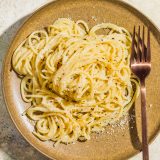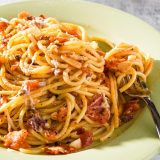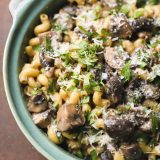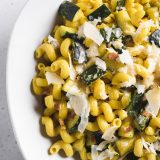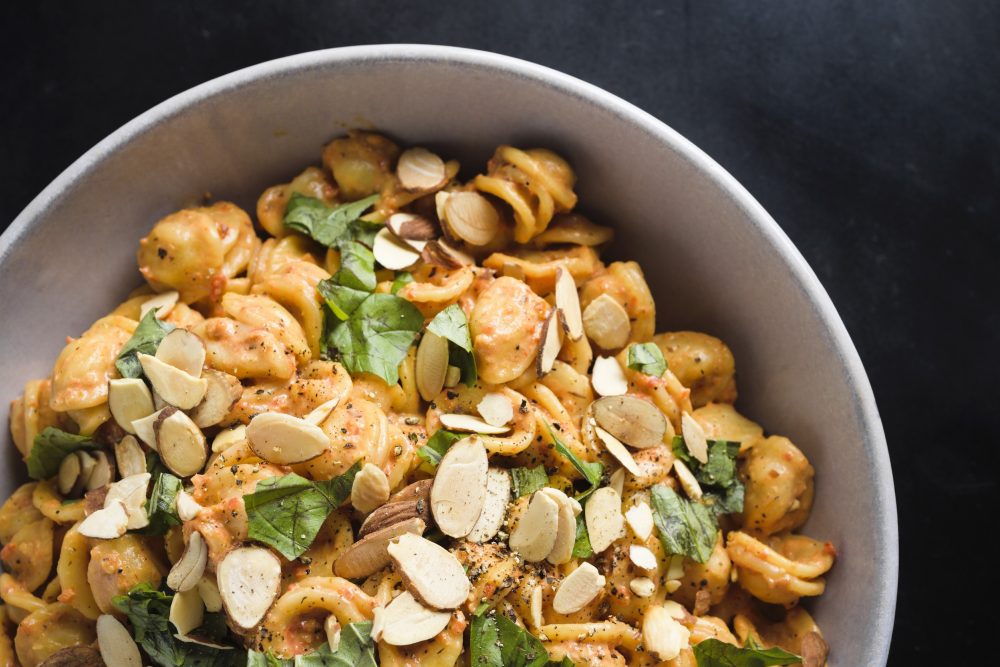If you’re like most of us at Milk Street, pasta is your go-to weeknight meal. With a seemingly infinite variety of recipes and (typically) one-bowl convenience, pasta is simple and takes the pain out of dinner prep.
While it’s easy to turn a box of pasta into a meal, many cooks don’t get much farther than boiled noodles and a jar of sauce. The good news is it’s just as easy to take that pasta from good to great with just a few considerations.
Here’s the Milk Street approach to perfect pasta every time, but for an even deeper dive, take the Milk Street Cooking School’s self-paced online class, Pasta Perfect.
Shop for Pasta Wisely
Not all dried pasta is of the same quality. We prefer Italian-made or small-batch dried pasta brands, which are produced by slowly extruding the dough through coarse-textured bronze dies that produces a rough, textured surface for sauces to cling to. If the pasta’s surface is too smooth, the sauce will slide right off. We’re particularly fond of small-batch Sfoglini from New York City and Pasta Mancini and Rustichella d’Abruzzo from Italy.
Shape matters
Pastas come in all shapes and sizes to suit different types of sauces. As a general rule, thin, long pastas are best for thinner, oil- or cream-based sauces because the thin sauce absorbs into the pasta and gets tangled up in the long strands (think pasta carbonara). Shorter, or tube-shaped pasta captures chunkier, thicker sauces. That said, don’t feel hidebound by convention—shape won’t ruin the meal!
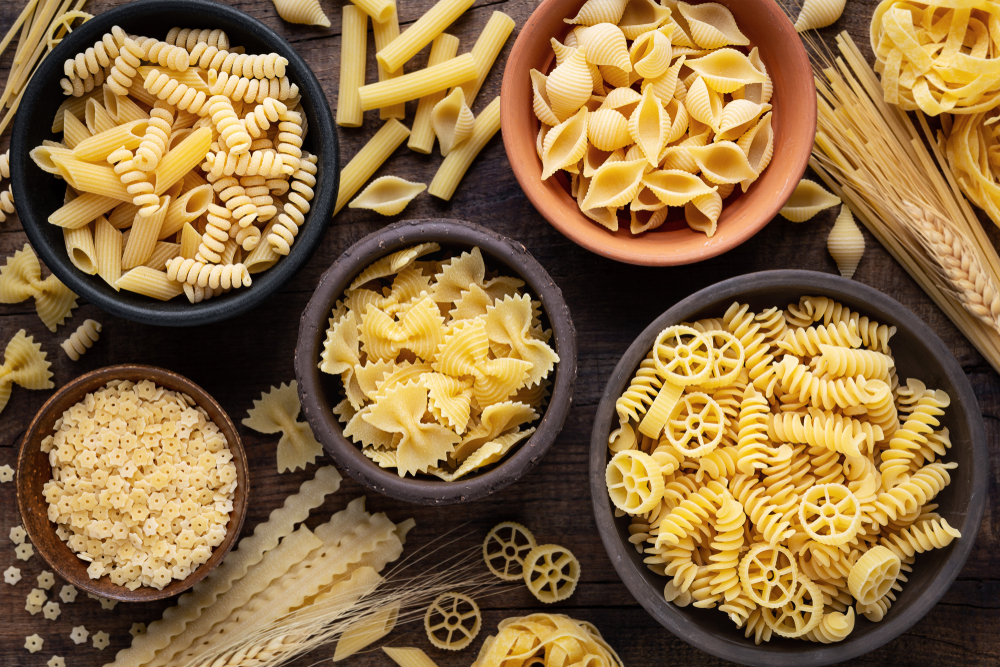
It also helps to consider variations on a theme. If you like longer noodles, try swapping out your standard spaghetti with thick bigoli, or tube-shaped perciatelli (also known as bucatini). Or chitarra—long, square-shaped noodles traditionally made by pushing the dough through taught metal wires (chitarra translates to “guitar.”)
Or if you want one pasta style in your pantry that can do it all, try all new cascatelli, developed by Daniel Pashman of the Sporkful podcast and produced by Sfoglini. The unique shape features frills and ruffles that tenaciously grip any style of sauce.
Salt your water
To season pasta to its core, not just flavor the outside, it’s essential to fully salt the water. Pasta cooked in unsalted water won’t taste like much at all. There’s a saying that pasta water should “taste of the sea,” but that’s vague guidance at best. The Dead Sea or the Mediterranean? Our general rule is 1 tablespoon Morton’s kosher salt per 4 quarts water, which is an ample amount of water for 1 pound of pasta. Add the salt to rapidly boiling water so it fully dissolves before adding the pasta.
Depending on the dish, we may vary the amount of cooking water, sometimes only 2 quarts water to 1 pound pasta. Using less water creates a starchier cooking liquid, which can be used to thicken or emulsify a sauce that might otherwise be thin. Make sure to read the recipe to ensure you’ve started with the right amount of water for the dish.
No, Don’t Add Oil, and Stir Often
While you should add plenty of salt, please don’t add oil (until after the pasta is fully cooked. There’s no need for it and in fact prevents the sauce from effectively clinging to the noodle.
And don’t forget to stir. Unstirred pasta has a tendency to clump together and if left unattended, can cook unevenly—especially when cooking in a lesser amount of water. Our favorite tools for stirring pasta include tongs or a fish spatula—the paddle’s slats allow water to flow through.
Finish Cooking Pasta in the Sauce
Why does restaurant pasta taste so good? Beyond the lashings of butter, it’s because they treat the starchy salted cooking water like a separate ingredient. The pasta is cooked to just shy of al dente, drained, then added directly to the sauce with a portion of the cooking water, then vigorously stirred. In this fashion, the now slightly thinned pasta sauce is sucked up by the pasta as it finishes cooking, and the starch helps emulsify and bind the sauce to the noodles. Pasta and sauce become a unified whole, not two separate entities sliding around in the bowl.
Make sure to save at least 1 cup of pasta cooking water and drain the pasta 1 minute before the package instructions, or still a little chalky at the center, so it’ll absorb the liquid and sauce without overcooking and turning mushy. If you've accidentally tossed your cooking water down the drain or are making gluten free pasta, we have an easy pasta water replacement for you. Mix ¼ teaspoon cornstarch into 1 cup water with a ¼ teaspoon salt and then microwave the mixture for 2 minutes, stir it, and microwave for another 2 minutes. The results mimic cooked pasta water in such a way that the dishes turn out nearly indistinguishable from the traditional recipe.
Try Our Tips with Milk Street's Pasta Recipes
Check out some of our favorite recipes to try these tips and tricks on in our Related Recipes section below. Whether it's an easy 20 minute cacio e pepe or a slightly more complex dish with zucchini, pancetta, and saffron, our pasta recipes keep your meals bold and flavorful, yet simple.
Join the conversation on Facebook, Twitter, Instagram and Pinterest
And if you're looking for more Milk Street, check out our livestream cooking classes with our favorite chefs, home cooks and friends for global recipes, cooking methods and more.
